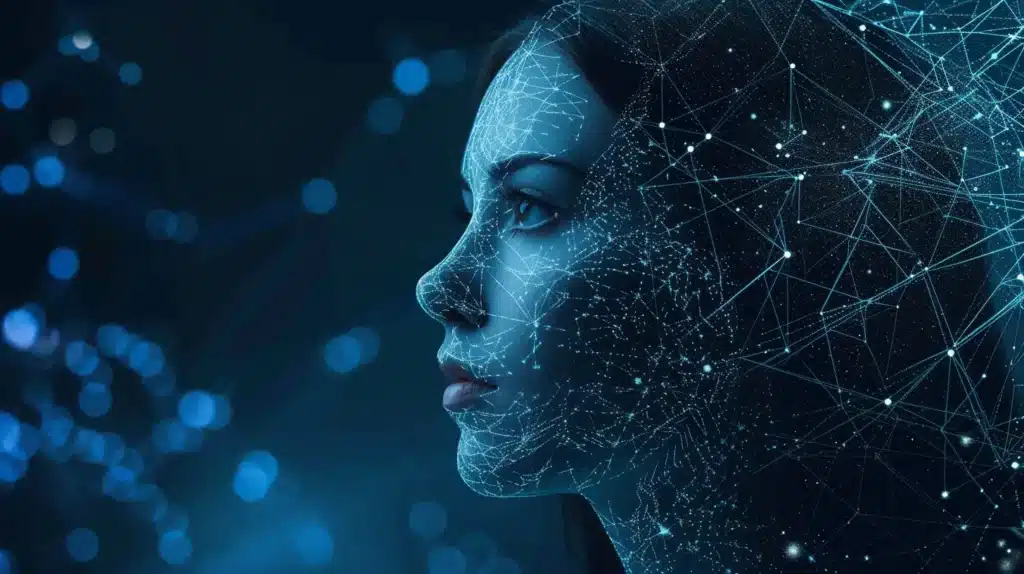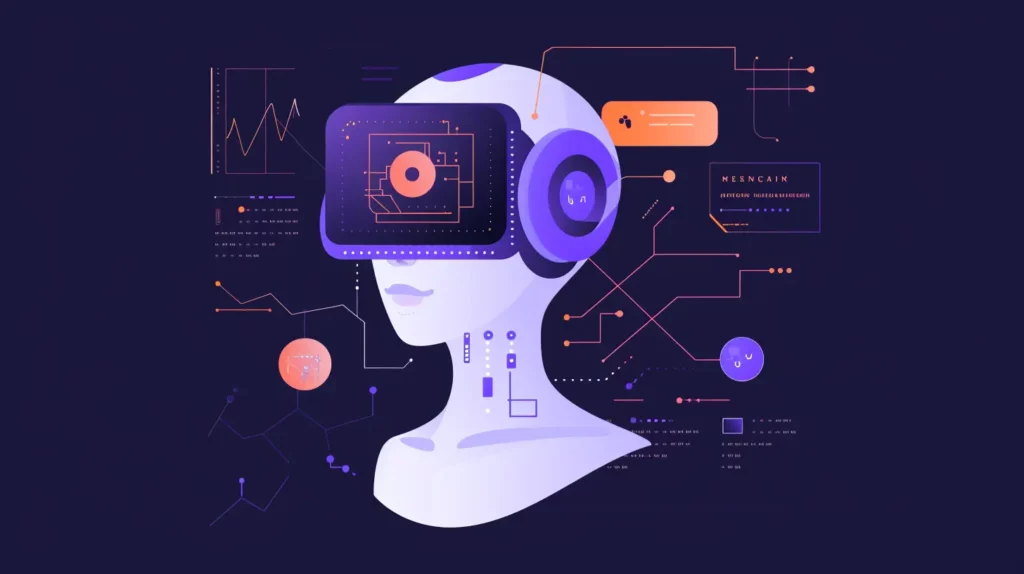In the ever-evolving landscape of web design, the Role of Machine Learning in Personalizing Web Design takes center stage. Picture this: a digital realm where your favorite websites intuitively understand and cater to your preferences, making every click feel tailor-made. That’s the magic that machine learning brings to the table.
In today’s digital age, where every interaction leaves a digital footprint, businesses and designers are tapping into the potential of machine learning algorithms. These smart algorithms analyze heaps of data, unraveling patterns, behaviors, and user preferences. The goal? Crafting web designs that resonate with individuals on a personal level.
So, buckle up for a journey into the synergy of technology and design. We’re about to explore how machine learning is reshaping the way we experience the web, ushering in an era of personalized digital interfaces that speak directly to you.
Understanding Web Personalization
Web personalization isn’t just a buzzword; it’s the secret sauce that transforms a generic online experience into a bespoke journey for each user. At its core, web personalization is about tailoring content, features, and recommendations based on individual user preferences, behaviors, and demographics.
Imagine logging into your favorite e-commerce site, and it already knows your size, and style preferences, and even suggests items based on your past purchases. That’s the magic of web personalization. It’s about creating a digital space that feels uniquely yours, adapting to your needs and interests in real time.
Personalization goes beyond a one-size-fits-all approach. It involves analyzing user data to create dynamic, adaptive, and relevant content. This could manifest in personalized product recommendations, content suggestions, or even the layout of a webpage.
The heart of understanding web personalization lies in recognizing that every user is different, and their digital journey should reflect that individuality. It’s about making the online world not just user-friendly but personally resonant, creating a connection between the user and the digital space they navigate. As we dive deeper into the role of machine learning, keep this concept of web personalization in mind—it’s the key to unlocking a more engaging and meaningful online experience.
The Need for Personalization in Web Design
In the vast expanse of the internet, where users are bombarded with information, the need for personalization in web design has never been more crucial. Picture yourself in a crowded marketplace, with each vendor vying for your attention. Now transpose that scenario into the digital sphere, where websites compete for the limited attention span of online visitors.
In this digital landscape, generic, one-size-fits-all approaches fall short. Users crave experiences that resonate with their unique preferences, interests, and behaviors. This is where the compelling need for personalization arises—a demand fueled by the desire for relevance and a more meaningful online journey.
Consider the frustration of navigating through a website cluttered with irrelevant information or products that don’t align with your interests. Personalization addresses this by curating content and experiences tailored to individual users. It’s about creating a virtual space that understands and anticipates user needs, making online interaction seamless, enjoyable, and efficient.
Beyond user satisfaction, personalization holds the key to increased engagement, customer loyalty, and business success. A personalized web design not only enhances the user experience but also contributes to improved conversion rates and a deeper connection between users and the digital platforms they engage with.
Basics of Machine Learning
At its core, machine learning is a subset of artificial intelligence that empowers computers to learn from data. Unlike traditional programming where explicit instructions dictate outcomes, machine learning algorithms evolve and improve their performance over time as they process and analyze vast datasets.
Think of it as teaching a computer to recognize patterns and make decisions without being explicitly programmed for each scenario. There are three main types of machine learning: supervised learning, unsupervised learning, and reinforcement learning.
- Supervised Learning: In this approach, the algorithm is trained on a labeled dataset, meaning it learns from input-output pairs. It can make predictions or decisions when given new, unseen data.
- Unsupervised Learning: Here, the algorithm explores data without predefined labels. Its goal is to identify patterns or structures within the data, making it particularly useful for clustering and association tasks.
- Reinforcement Learning: Inspired by behavioral psychology, reinforcement learning involves an agent learning to make decisions by receiving feedback in the form of rewards or penalties. The algorithm navigates an environment, adapting its actions to maximize cumulative rewards.
The magic of machine learning lies in its ability to generalize from learned patterns and make predictions or decisions on new, unseen data. It’s the driving force behind recommendation systems, predictive analytics, and, of course, the personalization of web design.

Machine Learning in Web Design
Now that we’ve grasped the basics of machine learning, let’s explore how this transformative technology intertwines with the intricate art of web design. Machine learning in web design is a game-changer, revolutionizing how websites adapt and respond to individual user preferences.
- Dynamic Content Recommendations: Machine learning algorithms analyze user behavior, deciphering patterns to predict what content a user might be interested in. This results in dynamic content recommendations, shaping a personalized browsing experience. Whether suggesting related articles, products, or services, these algorithms enhance user engagement.
- Adaptive User Interfaces: Web design is no longer static; it’s adaptive. Machine learning enables websites to tailor their interfaces based on individual user preferences. From adjusting color schemes to rearranging content layout, the user interface evolves to meet the unique needs of each visitor.
- Predictive Search and Autocomplete: Ever noticed how search engines seem to predict your query before you finish typing? Machine learning powers predictive search and autocomplete features, analyzing your search history and behavior to offer real-time suggestions, saving time and enhancing the search experience.
- Behavioral Analysis for Personalization: Understanding user behavior is at the heart of web personalization. Machine learning algorithms analyze user interactions, learning from clicks, dwell time, and navigation patterns. This behavioral analysis fuels the customization of content and recommendations, creating a more relevant and engaging user experience.
- A/B Testing Optimization: Machine learning algorithms can optimize A/B testing by dynamically adjusting variables based on user responses. This iterative process leads to continuous improvement in web design elements, ensuring that the website evolves to cater to user preferences and behavior.
Machine learning, essentially, acts as a digital curator, fine-tuning the online experience for each user. It’s the invisible force behind the seamless, personalized interactions that make websites not just functional but enjoyable.
Types of Machine Learning Algorithms
Machine learning algorithms come in various flavors, each tailored for specific tasks and scenarios:
- Supervised Learning Algorithms: These algorithms learn from labeled datasets, where the input data is paired with corresponding output labels. They are adept at making predictions and classifications, making them valuable for tasks such as sentiment analysis, image recognition, and recommendation systems.
- Unsupervised Learning Algorithms: Unsupervised learning thrives in scenarios where the data lacks explicit labels. These algorithms aim to identify patterns and structures within the data, making them well-suited for tasks like clustering, anomaly detection, and dimensionality reduction.
- Reinforcement Learning Algorithms: Inspired by behavioral psychology, reinforcement learning involves an agent interacting with an environment and learning to make decisions based on feedback in the form of rewards or penalties. This type of algorithm is instrumental in scenarios requiring decision-making, such as game-playing or autonomous systems.
- Semi-Supervised and Self-Supervised Learning: These are hybrid approaches that combine elements of both supervised and unsupervised learning. Semi-supervised learning utilizes a combination of labeled and unlabeled data, while self-supervised learning tasks the algorithm with generating its labels from the existing data.
- Ensemble Learning Algorithms: Ensemble learning involves combining the predictions of multiple machine learning models to improve overall performance and robustness. Techniques like Random Forests and Gradient Boosting are popular examples, offering enhanced accuracy and generalization.
These algorithms act as the intelligence behind the scenes, processing data and making real-time decisions to create a customized online experience for each user.
Applications in Personalizing Web Design
Now, let’s delve into the real-world applications where machine learning transforms static web design into a dynamic, user-centric journey.
- Personalized Content Recommendations: Machine learning algorithms analyze user preferences and behaviors to provide tailored content recommendations. Whether it’s suggesting articles, products, or multimedia, these recommendations enhance user engagement and satisfaction.
- Adaptive User Interfaces: Web interfaces can dynamically adapt based on user preferences and behavior. Machine learning algorithms ensure that the layout, color schemes, and overall design of a webpage evolve to create a personalized and visually appealing experience for each visitor.
- Predictive Search and Autocomplete: Search engines leverage machine learning to predict user queries and offer autocomplete suggestions. This not only speeds up the search process but also ensures that users find relevant content more efficiently.
- Behavioral Analysis for Dynamic Content Delivery: Machine learning algorithms continuously analyze user behavior, adapting content and recommendations in real time. By understanding clicks, dwell time, and navigation patterns, websites can dynamically adjust their content to match the evolving preferences of individual users.
- A/B Testing Optimization: Machine learning contributes to the optimization of A/B testing by dynamically adjusting variables based on user responses. This iterative process ensures that web design elements are continuously refined to align with user preferences, resulting in a more effective and personalized user experience.

Benefits of Machine Learning in Personalization
The fusion of machine learning and personalization in web design brings forth a plethora of benefits, shaping a digital landscape that is not only responsive but intuitively tailored to individual preferences.
- Enhanced User Experience: Personalization, powered by machine learning, elevates the user experience to new heights. By understanding user preferences, behaviors, and history, websites can provide content and features that resonate with each visitor, creating a seamless and enjoyable interaction.
- Increased User Engagement: Personalized content recommendations and adaptive interfaces contribute to higher user engagement. When users feel that a website understands and caters to their needs, they are more likely to spend time exploring, interacting, and returning for future visits.
- Improved Conversion Rates: A personalized web design, informed by machine learning insights, is more likely to convert visitors into customers. By presenting relevant products or content based on user preferences, the likelihood of conversions and successful transactions is significantly enhanced.
- Dynamic Content Adaptation: Machine learning enables websites to dynamically adapt content based on real-time user behavior. This adaptability ensures that users are consistently presented with content and recommendations that align with their evolving preferences, keeping the digital experience fresh and relevant.
- Efficient Predictive Capabilities: Predictive features, such as search autocomplete and content recommendations, streamline user interactions. Machine learning algorithms, by learning from historical data, can predict user intent and preferences, allowing for quicker and more efficient navigation through the digital space.
- Optimized Marketing Strategies: Personalization extends to marketing efforts, where machine learning can analyze user data to tailor targeted campaigns. This precision in marketing strategies ensures that promotional content reaches the right audience at the right time, maximizing the impact of advertising efforts.
- Data-Driven Decision-Making: Machine learning provides valuable insights through data analysis, empowering businesses to make informed decisions. Understanding user behavior and preferences allows for strategic adjustments in web design, ensuring continuous improvement based on real-time feedback.
- Competitive Edge: Embracing machine learning for personalization places businesses at the forefront of technological innovation. A personalized and adaptive web design not only satisfies user expectations but also sets a brand apart, fostering customer loyalty and trust.
In essence, the benefits of machine learning in personalization extend beyond mere customization; they shape a digital environment that is responsive, anticipatory, and finely tuned to the unique needs of each user.
Challenges and Considerations
While the integration of machine learning in personalizing web design brings about a host of advantages, it also presents its own set of challenges and considerations that demand thoughtful attention.
- Privacy Concerns: Personalization heavily relies on user data, and this raises privacy concerns. Balancing the benefits of customization with the protection of user privacy is a critical consideration. Striking the right balance requires transparent data practices and robust security measures.
- Data Quality and Bias: The effectiveness of machine learning algorithms depends on the quality of the data they are trained on. Biases present in training data can lead to skewed results, potentially reinforcing existing inequalities. Ensuring diverse and representative datasets is essential to mitigate bias in personalization.
- Overreliance on Historical Data: Machine learning algorithms learn from historical data, which may not accurately represent current user preferences or evolving trends. Overreliance on past data can lead to a lack of adaptability, impacting the algorithm’s ability to cater to changing user needs.
- Algorithmic Transparency: Understanding how machine learning algorithms make decisions is challenging, especially as they become more complex. Lack of transparency raises concerns about accountability and the potential for unintended consequences. Striving for transparency in algorithmic decision-making is crucial for building trust with users.
- User Control and Consent: Users may desire varying levels of personalization or may want to opt-out entirely. Providing clear options for users to control the extent of personalization and obtaining informed consent are essential for ethical and user-centric design.
- Technical Complexity and Implementation Costs: Implementing machine learning for web personalization requires technical expertise and can incur significant costs. Small businesses or startups may face challenges in adopting and maintaining machine learning solutions, limiting widespread accessibility.
- Dynamic User Preferences: User preferences are dynamic and can change over time. Adapting machine learning models to keep up with evolving user behaviors and preferences is an ongoing challenge. Regular model updates and retraining are necessary to ensure continued relevance.
- Ensuring Accessibility and Inclusivity: Personalization efforts should not inadvertently exclude certain user groups. Designing for accessibility and inclusivity is crucial to prevent unintentional biases and to ensure that the benefits of personalization are enjoyed by all users, regardless of diverse needs.
Navigating these challenges and considerations requires a holistic approach that prioritizes ethical considerations, user empowerment, and continuous improvement.

Future Trends in Machine Learning and Web Design
As technology continues to advance, the intersection of machine learning and web design is poised for exciting developments. Anticipating future trends in this dynamic space provides a glimpse into the potential transformations that will shape the digital experiences of tomorrow.
- Explainable AI (XAI): The demand for transparency in machine learning algorithms is driving the adoption of Explainable AI. In the context of web design, understanding how algorithms make decisions becomes crucial. Future trends will likely see advancements in making machine learning processes more interpretable, fostering trust and accountability.
- Generative AI for Content Creation: Generative Artificial Intelligence, capable of creating original content, holds immense promise for web design. From generating personalized graphics to dynamically creating website layouts, the integration of generative AI is expected to revolutionize the way content is produced and presented online.
- AI-Enhanced User Interfaces (UI) and User Experience (UX): Machine learning will play an increasingly integral role in enhancing UI/UX design. AI-driven interfaces will adapt in real time based on user behavior, providing an intuitive and personalized experience. This could involve predicting user intent, simplifying navigation, and even dynamically adjusting visual elements.
- Personalization Beyond Content: Future personalization efforts will extend beyond content recommendations to encompass a broader spectrum of user interactions. Machine learning algorithms will influence the entire user journey, from customizing user interfaces to predicting and adapting to user preferences at every touchpoint.
- Edge AI for Faster Response Times: The adoption of Edge AI, where processing occurs on local devices rather than centralized servers, will become more prevalent. This trend aims to reduce latency, providing faster response times for personalized interactions and ensuring a smoother user experience, especially in real-time applications.
- AI-Driven Design Tools: Machine learning will empower designers with AI-driven tools that automate repetitive tasks, suggest design elements, and streamline the creative process. These tools will enhance collaboration between human designers and intelligent algorithms, leading to more efficient and innovative web design.
- Voice and Natural Language Processing Integration: With the rise of voice-activated devices, machine learning will increasingly focus on natural language processing. Web designs will incorporate voice interfaces and better understand conversational cues, offering users a more natural and interactive experience.
- Continuous Learning and Adaptability: Machine learning models will evolve towards continuous learning, allowing them to adapt to changing user behaviors and preferences seamlessly. This adaptability ensures that personalized web experiences remain relevant and responsive over time.
- Ethical AI Design Guidelines: As the ethical considerations surrounding AI and machine learning become more prominent, future trends will likely see the establishment of standardized guidelines for ethical AI design. This includes prioritizing user privacy, avoiding biases, and ensuring transparency in algorithmic decision-making.
As we step into the future of machine learning and web design, these trends hold the promise of creating a digital landscape that is not only highly personalized but also ethically grounded, technologically advanced, and seamlessly integrated into our daily lives.
Conclusion – Role of Machine Learning in Personalizing Web Design
In a nutshell, the fusion of machine learning and web design is reshaping our digital experiences, making them more personal and adaptive. Despite the benefits, challenges like privacy and transparency remain.
Looking forward, trends like explainable AI and AI-driven design tools promise an even more dynamic and user-centric online world. The journey of machine learning in web design is an exciting ride, unlocking new possibilities for a personalized and inclusive digital future.
Why Clio Websites
We hope that we helped to understand the role of machine learning in personalizing web design. Our recommendations and techniques are based on years of experience helping businesses like yours.
At Clio, we have helped many clients grow their businesses with websites tuned for engagement and conversions.
Contact us if you would like us to help you create a unique website that your visitor will love.



